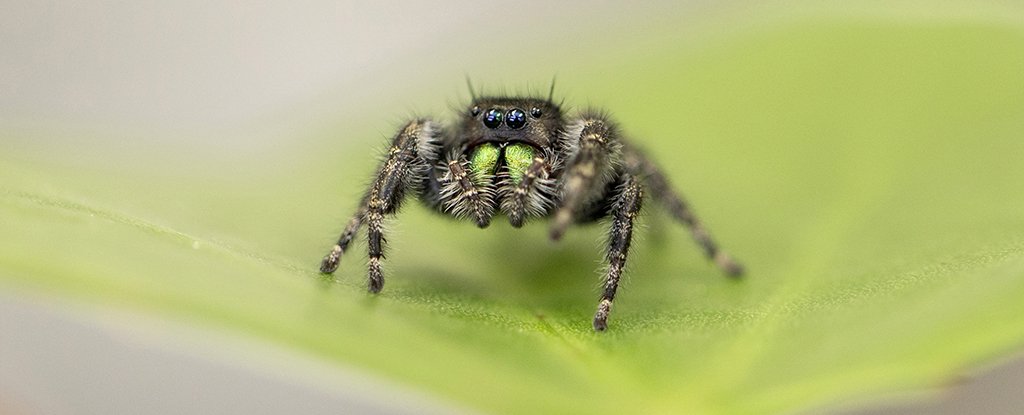
Baby jumping spiders kept in observation showed signs of a sleep cycle. They do snooze just like humans do. Read to know more.
“Do spiders sleep?”: A question that has remained unanswered and has kept scientists up.
To find out more about this, Danielle Roessler and her colleagues set up cameras and observed baby jumping spiders. The spiders’ legs twitched and their eyes briefly flickered in patterns that closely resembled sleep cycles.
This sleeping pattern that was observed in them was described as a “REM sleep-like state”. Rapid eye movement (REM) sleep, which occurs in humans, is an active stage of sleep during which certain brain regions become active. It is strongly associated with dreaming.

Some other birds and mammals have also been known to experience REM sleep cycles. Roessler, an evolutionary biologist at the University of Konstanz, Germany, has said that creatures like jumping spiders have not received much attention in the matter. Hence, it was not known what kind of sleep they experience.
Their study was published in the journal Proceedings of the National Academy of Sciences (PNAS) on Monday, 8th August.
Roessler had recently gotten some jumping spiders to study
The species is relatively common and has a furry brown body with four pairs of big eyes. Roessler, along with her team, started working on the question of their sleep when she discovered the spiders hanging from threads of silk in their lab containers at night.
“It was just the most unusual thing I’ve ever seen,” she said, referring to the suspending jumping spiders.
According to the study, the spiders’ nocturnal movements resembled REM in other animals, such as the twitching of sleeping dogs or cats. And they occurred in regular cycles, much like how people sleep.
Paul Shamble, an evolutionary biologist at Harvard University and the co-author of the study, explained that many species of spiders do not have moveable eyes. This is what makes their sleep cycles hard to compare to other species.
But according to Shamble, these jumping spiders are predators that move their retinas to change their focus as they prey. A clear window into the young spiders’ bodies is also provided by their transparent outer shell.
“But sometimes as a biologist, you just get really, really lucky,” he said.
Scientists still have to figure out whether the jumping spiders are actually sleeping or not
Roessler said that she and her team still have to figure out whether the spiders are actually sleeping or not when they are in their resting states. This involves determining whether they react to triggers that would typically set them off more slowly or not at all.
On the evolutionary tree, creatures like the jumping spider are very far from humans. A sleep expert who was not engaged in the study, Jerry Siegel, expressed skepticism about the spiders’ ability to actually undergo REM sleep.
Seigel, from the UCLA Center for Sleep Research, said, “There may be animals that have activity in quiet states. But are they REM sleep? It’s hard to imagine that they could be the same thing.”
The discovery of REM-like symptoms in such a far relative was nevertheless interesting, according to Barrett Klein, an entomologist at the University of Wisconsin-La Crosse who was also not involved with the study. He noted that there are still many unanswered questions regarding the prevalence of REM sleep and its potential utility for species.
The REM sleep is “still very much a black box,” he said.
